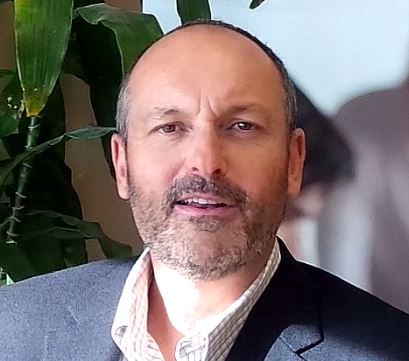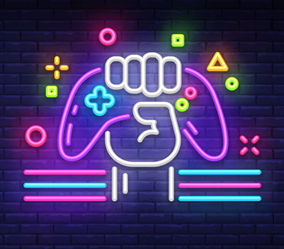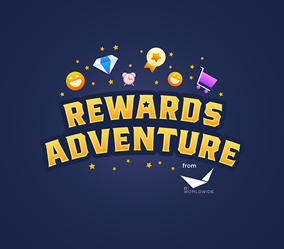Success in the New Year: How to Set and Achieve Your Sales Goals
Written by: Andrew Clark
(View Author Bio)

According to Forbes, only 8% of all people achieve their New Year’s resolutions. Unrealistic expectations are a big reason why resolutions failed. Typically, it doesn’t take long to fall back into the same habits and nothing changes.
So, either you didn’t want it bad enough or you lacked the motivation and the tools to achieve your goals. In Behavioural Economics (BE) terms it’s called preference reversal or the say-do gap. People will talk a lot about changing behaviour, but rarely DO something about it without motivation. That would be fine if you want to do what you have always done. The problem is that expectations for performance do change. And they don’t go down. Actionable relevant goals are the way to go.
How about New Year’s goals that you will actually achieve?
From working with many of the Fortune 1000, we know that many companies want to kick off the new calendar year with fast-start sales activities. When launching a sales contest, two immediate questions come to mind and the answers can change everything:
- Do I believe I have a chance to achieve?
- Is it worth it?
Once you get passed that hurdle, success is not a given. You may not achieve your goal, but why?
- You don’t want it enough.
That may sound crazy but if your goal isn’t something you really, really want—and want more than your current situation—you simply won’t achieve it. Any progress achieved will be accidental because you will give up. You have to believe your achieved state will be far superior to your current state.
- You don’t have a good plan.
Setting a goal is one thing. If you’re going to achieve your goal, you’ll need a workable plan. That means you will have had to think through potential problems that are likely to block your progress.
Our research in BE proves that setting a goal is a powerful driver of behaviour—so much so that at the exact moment you set your goal—you have committed to it and the catalyst effect kicks in. The catalyst effect is the fuel that empowers you to overcome significant challenges and still achieve your goal. The three key parts of the catalyst effect are:
- The goal must be meaningful and rewarding.
- The goal must be relevant.
- The goal must be self-selected.
Achieving the goal must be rewarding to you.
At some level, salespeople are intrinsically motivated to succeed. Extrinsic motivation utilizing hedonic rewards is a powerful driver of performance to take it to the next level. Of course, the further you go on the rewards efficacy continuum, the more luxurious the reward, the greater the motivation. Without a strong reward, your commitment to achieving the goal is likely to deteriorate over time. The most compelling rewards are luxury goods, travel, and experiences.
The Rewards Efficacy Continuum

Efficacy is the ability something has to produce a desired result. It relates to effectiveness. The further you go away from cash, the greater the ability to change behaviour and produce results.
(Source: Dr. Ran Kivetz Columbia University)
The goal must be relevant to you.
They must relate to your level of performance and your real potential. Most failures are a result of a lack of relevance. If you feel you have a chance to win, you are in! It’s called idiosyncratic fit. Without the fit, you simply aren’t engaged. How often have you heard sales teams say “The same person always wins so I don’t have a chance?”
You have to select it.
If you are told, “You must do this”, it’s highly likely it won’t happen unless you take ownership. This is less of a rational decision than you may think. Our emotions frame our commitment with the intensity we feel around the goal. The more emotion at the moment of selection, the higher the likelihood of achievement will be. When you select a goal that is relevant and meaningful, your brain will engage the planning function automatically and you’ll be on your way to figuring out how you’re going to achieve it.
You also really need to engage the entire audience. Focusing on only top performers isn’t enough. Remember the comment earlier about the same people always winning? Well, they can! We simply want more winners overall. Incremental performance from the entire salesforce can dramatically increase overall results.
We conducted a study using sales results gathered during non-incentive periods from 150 companies and more than 50,000 salespeople. The study found:
- Only one instance of a true 80/20 distribution of sales — making the “rule” non-existent.
- 80% of sales actually come from the top 46% of salespeople.
- More net lift is available from the bottom 80% than the top 20.
- Any sales incentive program aimed at the top 20% eliminates more than half of the top producers.
Based on these results, we’ve proven it makes better sense to design sales incentive programs that are much more inclusive than the outdated “top performer” approach. It pays to engage performance levels from top to bottom and create lift from every sector of the performance curve. However, that can rarely be done with the same set of rules applying to both your top sales reps and your recent hires.
BI WORLDWIDE’s sales incentive program, GoalQuest, methodology relies precisely on these principles leveraging self-selection of goals, compelling reward options, and relevant goal levels based on participants’ past performance. We incorporate this with two powerful effects from the science of applied behavioural economics:
- Choice architecture: Gives participants a choice of different goal levels.
- Loss aversion: The reward is only earned if the selected goal is achieved.
GoalQuest works and we can prove it. Its methodology has been used by hundreds of Fortune 1000 companies. Over 1.4 million salespeople and channel partners have participated in over 1,250 GoalQuest programs. Especially effective for short-term incentives, what is really compelling is that when selecting a goal the highest percentage of people select and achieve at the highest goal level.
GoalQuest relies on a robust database of activity and provides us with the ability to estimate results and Return on Investment (ROI) before starting the program. As a pay-for-performance sales incentive, there is no cost at all if participants don’t achieve their goals.
So, forget New Year’s Resolutions. GoalQuest is the perfect contest structure for the New Year. Most GoalQuest programs run 30 or 60 days and it only takes us 10 business days to get up and running. It’s not too late to get back on track to reach your goals. Relevant, self-selected goals with meaningful rewards behind them will empower and inspire your salespeople to break through barriers, remain committed, and maintain the focus they need to achieve measurable results.
Forget New Year’s Resolutions. Our sales incentive program, GoalQuest, is the perfect timing for revitalizing your sales goals this New Year.
See what GoalQuest can do for you.
Ready to kick-start your sales this New Year?






















